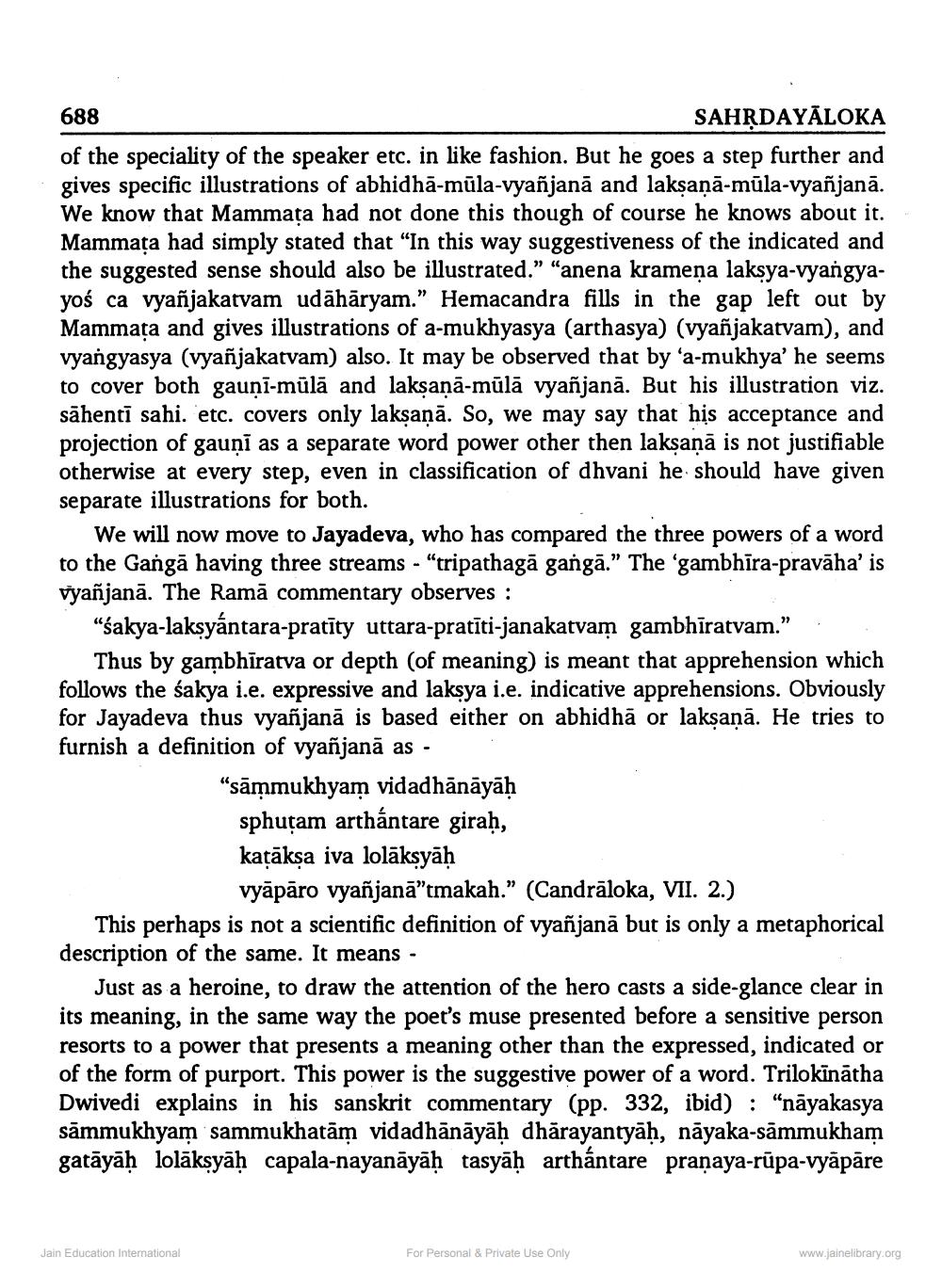________________
688
SAHRDAYĀLOKA of the speciality of the speaker etc. in like fashion. But he goes a step further and gives specific illustrations of abhidhā-mūla-vyañjanā and laksanā-mula-vyañjanā. We know that Mammata had not done this though of course he knows about it. Mammața had simply stated that “In this way suggestiveness of the indicated and the suggested sense should also be illustrated." "anena krameņa lakşya-vyangyayoś ca vyañjakatvam udāhāryam." Hemacandra fills in the gap left out by Mammaţa and gives illustrations of a-mukhyasya (arthasya) (vyañjakatvam), and vyangyasya (vyañjakatvam) also. It may be observed that by 'a-mukhya' he seems to cover both gauni-mülā and laksaņā-mūlā vyañjanā. But his illustration viz. sāhenti sahi. etc. covers only laksaņā. So, we may say that his acceptance and projection of gauni as a separate word power other then laksanā is not justifiable otherwise at every step, even in classification of dhvani he should have given separate illustrations for both.
We will now move to Jayadeva, who has compared the three powers of a word to the Gangā having three streams - "tripathagā gangā." The 'gambhīra-pravāha' is vyañjanā. The Ramā commentary observes :
"sakya-laksyántara-pratīty uttara-pratīti-janakatvam gambhīratvam.".
Thus by gambhīratva or depth (of meaning) is meant that apprehension which follows the śakya i.e. expressive and laksya i.e. indicative apprehensions. Obviously for Jayadeva thus vyañjanā is based either on abhidhā or laksaņā. He tries to furnish a definition of vyañjanā as -
"sāmmukhyam vidadhānāyāḥ
sphuţam arthántare giraḥ, katākṣa iva lolāksyāḥ
vyāpāro vyañjanā”tmakah." (Candrāloka, VII. 2.) This perhaps is not a scientific definition of vyañjanā but is only a metaphorical description of the same. It means -
Just as a heroine, to draw the attention of the hero casts a side-glance clear in its meaning, in the same way the poet's muse presented before a sensitive person resorts to a power that presents a meaning other than the expressed, indicated or of the form of purport. This power is the suggestive power of a word. Trilokīnātha Dwivedi explains in his sanskrit commentary (pp. 332, ibid) : "nāyakasya sāmmukhyam sammukhatām vidadhānāyāḥ dhārayantyāḥ, nāyaka-sāmmukham gatāyāḥ lolāksyāḥ capala-nayanāyāḥ tasyāḥ arthántare pranaya-rūpa-vyāpāre
Jain Education Interational
For Personal & Private Use Only
www.jainelibrary.org




